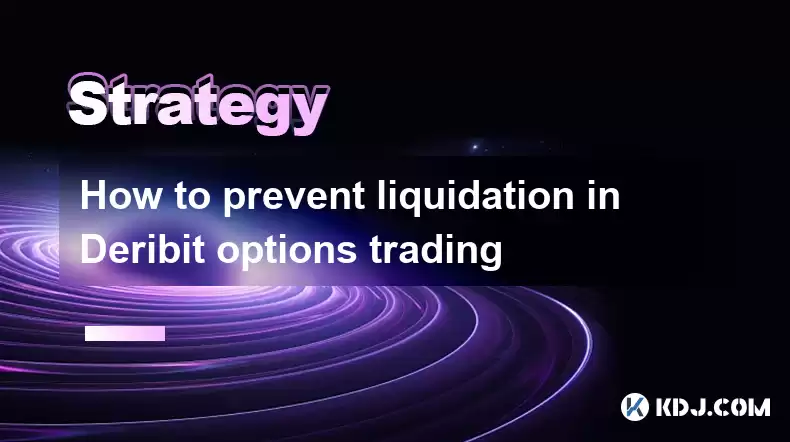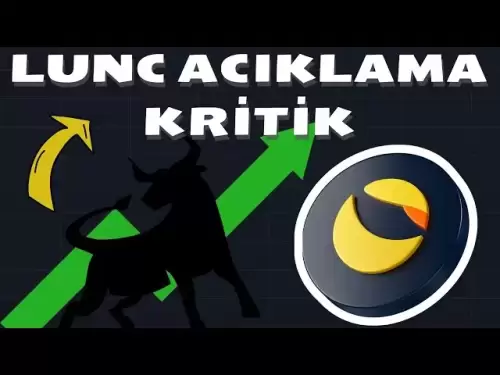-
 Bitcoin
Bitcoin $117600
2.11% -
 Ethereum
Ethereum $3907
6.13% -
 XRP
XRP $3.288
9.68% -
 Tether USDt
Tether USDt $1.000
-0.01% -
 BNB
BNB $784.8
2.00% -
 Solana
Solana $174.3
3.60% -
 USDC
USDC $0.9997
-0.03% -
 Dogecoin
Dogecoin $0.2220
8.04% -
 TRON
TRON $0.3379
0.01% -
 Cardano
Cardano $0.7829
5.46% -
 Stellar
Stellar $0.4348
8.84% -
 Hyperliquid
Hyperliquid $40.50
6.38% -
 Sui
Sui $3.757
7.22% -
 Chainlink
Chainlink $18.41
10.06% -
 Bitcoin Cash
Bitcoin Cash $581.6
1.91% -
 Hedera
Hedera $0.2586
5.37% -
 Avalanche
Avalanche $23.30
4.67% -
 Ethena USDe
Ethena USDe $1.001
0.01% -
 Litecoin
Litecoin $122.0
2.62% -
 UNUS SED LEO
UNUS SED LEO $8.972
-0.23% -
 Toncoin
Toncoin $3.338
1.14% -
 Shiba Inu
Shiba Inu $0.00001282
3.76% -
 Uniswap
Uniswap $10.38
6.88% -
 Polkadot
Polkadot $3.852
4.63% -
 Dai
Dai $1.000
0.02% -
 Bitget Token
Bitget Token $4.463
2.29% -
 Monero
Monero $263.6
-7.22% -
 Cronos
Cronos $0.1496
4.78% -
 Pepe
Pepe $0.00001106
4.91% -
 Aave
Aave $284.3
8.09%
How to prevent liquidation in Deribit options trading
To prevent liquidation on Deribit, understand margin requirements, use stop-loss orders, diversify your portfolio, monitor market conditions, and manage your positions effectively.
Apr 07, 2025 at 01:49 pm

Trading options on Deribit can be an exciting and profitable venture, but it also comes with the risk of liquidation. Liquidation occurs when the value of your position falls below the maintenance margin level, and the exchange closes your position to prevent further losses. To prevent liquidation, it's important to understand the mechanics of options trading and implement strategies to manage your risk effectively. In this article, we will explore various methods to prevent liquidation in Deribit options trading, including understanding margin requirements, using stop-loss orders, diversifying your portfolio, and monitoring market conditions.
Understanding Margin Requirements
Before diving into specific strategies, it's crucial to understand how margin requirements work on Deribit. Margin is the amount of capital you need to hold in your account to open and maintain a position. There are two types of margin: initial margin and maintenance margin. The initial margin is the amount required to open a position, while the maintenance margin is the minimum amount needed to keep the position open. If your account balance falls below the maintenance margin, your position may be liquidated.
- Initial Margin: This is the amount you need to deposit to open an options position. It acts as a security deposit to cover potential losses.
- Maintenance Margin: This is the minimum amount required to keep your position open. If your account balance drops below this level, you risk liquidation.
To prevent liquidation, ensure that your account balance always exceeds the maintenance margin. You can do this by monitoring your positions closely and adding more funds if necessary.
Using Stop-Loss Orders
Stop-loss orders are a valuable tool for managing risk in options trading. A stop-loss order is an instruction to close your position automatically if the price reaches a certain level. By setting a stop-loss order, you can limit your potential losses and prevent liquidation.
- Setting a Stop-Loss Order: Determine the maximum loss you are willing to accept and set your stop-loss order at that level. For example, if you are long a call option and the price drops to a certain point, the stop-loss order will trigger and close your position.
- Adjusting Stop-Loss Orders: As the market moves, you may need to adjust your stop-loss orders to reflect changes in your risk tolerance and market conditions. Regularly review and update your stop-loss levels to ensure they remain effective.
Using stop-loss orders can help you manage your risk and prevent liquidation by automatically closing positions that move against you.
Diversifying Your Portfolio
Diversification is another key strategy for preventing liquidation in Deribit options trading. By spreading your investments across different assets and strategies, you can reduce the impact of any single position on your overall portfolio.
- Invest in Different Assets: Instead of focusing on a single cryptocurrency, consider trading options on multiple assets. This can help you spread your risk and reduce the likelihood of liquidation.
- Use Different Strategies: Combine different options strategies, such as buying calls, selling puts, or using spreads. Each strategy has its own risk profile, and diversifying your strategies can help you manage your overall risk.
- Balance Long and Short Positions: By holding both long and short positions, you can hedge your bets and reduce the impact of market movements on your portfolio. This can help you maintain a balanced risk profile and prevent liquidation.
Diversifying your portfolio can help you manage risk and prevent liquidation by reducing your exposure to any single position or market movement.
Monitoring Market Conditions
Staying informed about market conditions is essential for preventing liquidation in Deribit options trading. By keeping an eye on market trends, volatility, and news events, you can make more informed decisions and adjust your positions accordingly.
- Track Market Trends: Monitor the overall direction of the market and adjust your positions to align with these trends. For example, if the market is trending bullish, you may want to focus on buying call options.
- Monitor Volatility: Volatility can significantly impact the value of your options positions. Use tools like the Volatility Index (VIX) to gauge market volatility and adjust your strategies accordingly.
- Stay Informed About News Events: News events, such as regulatory announcements or major economic data releases, can cause sudden market movements. Stay informed about these events and be prepared to adjust your positions if necessary.
By monitoring market conditions and staying informed, you can make more informed decisions and take proactive steps to prevent liquidation.
Managing Your Positions
Effective position management is crucial for preventing liquidation in Deribit options trading. This involves regularly reviewing your positions, adjusting them as needed, and taking steps to minimize your risk.
- Regularly Review Your Positions: Set aside time each day to review your options positions. Look for any positions that are approaching the maintenance margin level and take action to prevent liquidation.
- Adjust Your Positions: As market conditions change, you may need to adjust your positions to reflect these changes. This could involve closing losing positions, adding to winning positions, or adjusting your stop-loss orders.
- Use Hedging Strategies: Hedging involves taking positions that offset the risk of your existing positions. For example, if you are long a call option, you could hedge by selling a put option on the same asset. This can help you manage your risk and prevent liquidation.
By actively managing your positions and taking steps to minimize your risk, you can prevent liquidation and protect your capital.
Using Risk Management Tools
Deribit offers a range of risk management tools that can help you prevent liquidation. These tools can provide valuable insights into your risk exposure and help you make more informed decisions.
- Risk Management Dashboard: Deribit's risk management dashboard provides a comprehensive overview of your risk exposure, including your margin requirements, unrealized profits and losses, and potential liquidation levels. Use this dashboard to monitor your risk and take action to prevent liquidation.
- Position Sizing Calculator: This tool helps you determine the appropriate size for your options positions based on your risk tolerance and account balance. By using the position sizing calculator, you can ensure that your positions are sized appropriately to prevent liquidation.
- Margin Calculator: The margin calculator helps you understand the margin requirements for your options positions. By using this tool, you can ensure that you have sufficient funds in your account to meet the maintenance margin requirements and prevent liquidation.
By using these risk management tools, you can gain a better understanding of your risk exposure and take proactive steps to prevent liquidation.
Maintaining Adequate Capital
Maintaining adequate capital in your account is essential for preventing liquidation in Deribit options trading. If your account balance falls below the maintenance margin level, your positions may be liquidated.
- Monitor Your Account Balance: Regularly check your account balance to ensure that it remains above the maintenance margin level. If your balance is approaching the maintenance margin, take action to add more funds to your account.
- Add Funds as Needed: If your account balance is approaching the maintenance margin level, add more funds to your account to prevent liquidation. You can do this by transferring funds from your bank account or selling other assets.
- Avoid Overleveraging: Overleveraging, or using too much borrowed money to trade, can increase your risk of liquidation. Be cautious when using leverage and ensure that you have sufficient capital to cover potential losses.
By maintaining adequate capital in your account, you can prevent liquidation and protect your positions.
Understanding Liquidation Levels
Understanding the liquidation levels for your options positions is crucial for preventing liquidation. Liquidation levels are the price levels at which your positions will be closed if your account balance falls below the maintenance margin.
- Calculate Liquidation Levels: Use Deribit's risk management tools to calculate the liquidation levels for your options positions. This will help you understand the price levels at which your positions may be liquidated.
- Monitor Liquidation Levels: Regularly monitor the liquidation levels for your positions and take action to prevent liquidation. If the market is approaching your liquidation levels, consider closing or adjusting your positions to prevent liquidation.
- Adjust Your Positions: If the market is approaching your liquidation levels, consider adjusting your positions to reduce your risk. This could involve closing losing positions, adding to winning positions, or adjusting your stop-loss orders.
By understanding and monitoring your liquidation levels, you can take proactive steps to prevent liquidation and protect your positions.
Using Options Strategies to Manage Risk
Using options strategies can help you manage your risk and prevent liquidation in Deribit options trading. Options strategies involve combining different options positions to achieve a specific risk-reward profile.
- Covered Calls: A covered call involves selling a call option against an existing long position in the underlying asset. This strategy can generate additional income and help you manage your risk.
- Protective Puts: A protective put involves buying a put option to hedge against a decline in the value of an existing long position. This strategy can help you limit your potential losses and prevent liquidation.
- Spreads: Spreads involve combining multiple options positions to create a more complex risk-reward profile. For example, a bull call spread involves buying a call option at a lower strike price and selling a call option at a higher strike price. This strategy can help you manage your risk and prevent liquidation.
By using options strategies, you can manage your risk and prevent liquidation by creating a more balanced risk-reward profile.
Staying Disciplined and Patient
Staying disciplined and patient is essential for preventing liquidation in Deribit options trading. Emotional decision-making can lead to poor trading decisions and increase your risk of liquidation.
- Stick to Your Trading Plan: Develop a trading plan that outlines your risk management strategies, position sizing, and entry and exit points. Stick to your plan and avoid making impulsive decisions based on emotions.
- Avoid Chasing Losses: If you experience a loss, avoid the temptation to chase your losses by taking on more risk. Instead, stick to your trading plan and focus on managing your risk.
- Stay Patient: Options trading can be a slow and steady process. Stay patient and avoid making rash decisions based on short-term market movements. Focus on the long-term performance of your portfolio and stick to your risk management strategies.
By staying disciplined and patient, you can make more informed decisions and prevent liquidation in Deribit options trading.
Common Questions About Preventing Liquidation in Deribit Options Trading
Q: What is liquidation in Deribit options trading?
A: Liquidation in Deribit options trading occurs when the value of your position falls below the maintenance margin level, and the exchange closes your position to prevent further losses.
Q: How can I prevent liquidation in Deribit options trading?
A: To prevent liquidation, you can use strategies such as understanding margin requirements, using stop-loss orders, diversifying your portfolio, monitoring market conditions, managing your positions, using risk management tools, maintaining adequate capital, understanding liquidation levels, using options strategies to manage risk, and staying disciplined and patient.
Q: What are the margin requirements for Deribit options trading?
A: Margin requirements for Deribit options trading include the initial margin, which is the amount required to open a position, and the maintenance margin, which is the minimum amount needed to keep the position open. If your account balance falls below the maintenance margin, your position may be liquidated.
Q: How can I use stop-loss orders to prevent liquidation?
A: You can use stop-loss orders to prevent liquidation by setting a stop-loss order at the maximum loss you are willing to accept. If the price reaches this level, the stop-loss order will trigger and close your position, limiting your potential losses and preventing liquidation.
Q: Why is diversification important for preventing liquidation?
A: Diversification is important for preventing liquidation because it helps you spread your risk across different assets and strategies. By diversifying your portfolio, you can reduce the impact of any single position on your overall portfolio and prevent liquidation.
Q: How can I monitor market conditions to prevent liquidation?
A: You can monitor market conditions to prevent liquidation by tracking market trends, monitoring volatility, and staying informed about news events. By staying informed, you can make more informed decisions and adjust your positions to prevent liquidation.
Q: What are some risk management tools available on Deribit?
A: Deribit offers risk management tools such as a risk management dashboard, a position sizing calculator, and a margin calculator. These tools can help you monitor your risk exposure and take proactive steps to prevent liquidation.
Q: How can I maintain adequate capital to prevent liquidation?
A: You can maintain adequate capital to prevent liquidation by monitoring your account balance, adding funds as needed, and avoiding overleveraging. By maintaining adequate capital, you can ensure that your account balance remains above the maintenance margin level and prevent liquidation.
Q: What are liquidation levels, and how can I use them to prevent liquidation?
A: Liquidation levels are the price levels at which your positions will be closed if your account balance falls below the maintenance margin. You can use liquidation levels to prevent liquidation by calculating and monitoring them, and adjusting your positions if the market approaches these levels.
Q: How can options strategies help me manage risk and prevent liquidation?
A: Options strategies can help you manage risk and prevent liquidation by combining different options positions to create a more balanced risk-reward profile. Strategies such as covered calls, protective puts, and spreads can help you manage your risk and prevent liquidation.
Disclaimer:info@kdj.com
The information provided is not trading advice. kdj.com does not assume any responsibility for any investments made based on the information provided in this article. Cryptocurrencies are highly volatile and it is highly recommended that you invest with caution after thorough research!
If you believe that the content used on this website infringes your copyright, please contact us immediately (info@kdj.com) and we will delete it promptly.
- EigenLayer, Restaking, and Ethereum: Navigating the Hype and the Hazards
- 2025-08-08 06:30:12
- Super Bowl 59: Jon Batiste to Jazz Up the National Anthem
- 2025-08-08 06:30:12
- Cold Wallet Crypto in 2025: The Future is Now, Ya'll
- 2025-08-08 05:10:13
- MAGACOIN, SOL, and ADA: A Tale of Shifting Tides in Crypto
- 2025-08-08 05:10:13
- SHIB Price, PEPE, and the Memecoin Supercycle: Who Will Reign Supreme?
- 2025-08-08 05:50:12
- Pudgy Penguins Price Prediction: Google Trends & Breakout Signals
- 2025-08-08 05:50:12
Related knowledge

How to avoid common crypto investment mistakes?
Jul 13,2025 at 01:35am
Understanding the Risks of Crypto InvestmentInvesting in cryptocurrency can be highly rewarding, but it also comes with significant risks. One of the ...

What is a long-short crypto strategy?
Jul 15,2025 at 10:56am
Understanding the Basics of a Long-Short Crypto StrategyA long-short crypto strategy is an investment approach where traders simultaneously take long ...

What is a long-short crypto strategy?
Jul 11,2025 at 01:28pm
Understanding the Basics of Long-Short Crypto StrategyA long-short crypto strategy is an investment approach where traders take both long and short po...

How to use the RSI indicator for crypto?
Jul 12,2025 at 03:56pm
Understanding the RSI Indicator in Cryptocurrency TradingThe Relative Strength Index (RSI) is a momentum oscillator used to measure the speed and chan...

Is copy trading a good strategy for crypto beginners?
Jul 12,2025 at 08:28am
Understanding Copy Trading in the Cryptocurrency MarketCopy trading is a strategy where novice traders replicate the trades of experienced investors a...

How to build a crypto portfolio with $1000?
Jul 13,2025 at 08:14pm
Understanding the Basics of Cryptocurrency InvestmentBuilding a crypto portfolio with $1000 starts with understanding the fundamentals of cryptocurren...

How to avoid common crypto investment mistakes?
Jul 13,2025 at 01:35am
Understanding the Risks of Crypto InvestmentInvesting in cryptocurrency can be highly rewarding, but it also comes with significant risks. One of the ...

What is a long-short crypto strategy?
Jul 15,2025 at 10:56am
Understanding the Basics of a Long-Short Crypto StrategyA long-short crypto strategy is an investment approach where traders simultaneously take long ...

What is a long-short crypto strategy?
Jul 11,2025 at 01:28pm
Understanding the Basics of Long-Short Crypto StrategyA long-short crypto strategy is an investment approach where traders take both long and short po...

How to use the RSI indicator for crypto?
Jul 12,2025 at 03:56pm
Understanding the RSI Indicator in Cryptocurrency TradingThe Relative Strength Index (RSI) is a momentum oscillator used to measure the speed and chan...

Is copy trading a good strategy for crypto beginners?
Jul 12,2025 at 08:28am
Understanding Copy Trading in the Cryptocurrency MarketCopy trading is a strategy where novice traders replicate the trades of experienced investors a...

How to build a crypto portfolio with $1000?
Jul 13,2025 at 08:14pm
Understanding the Basics of Cryptocurrency InvestmentBuilding a crypto portfolio with $1000 starts with understanding the fundamentals of cryptocurren...
See all articles

























































































